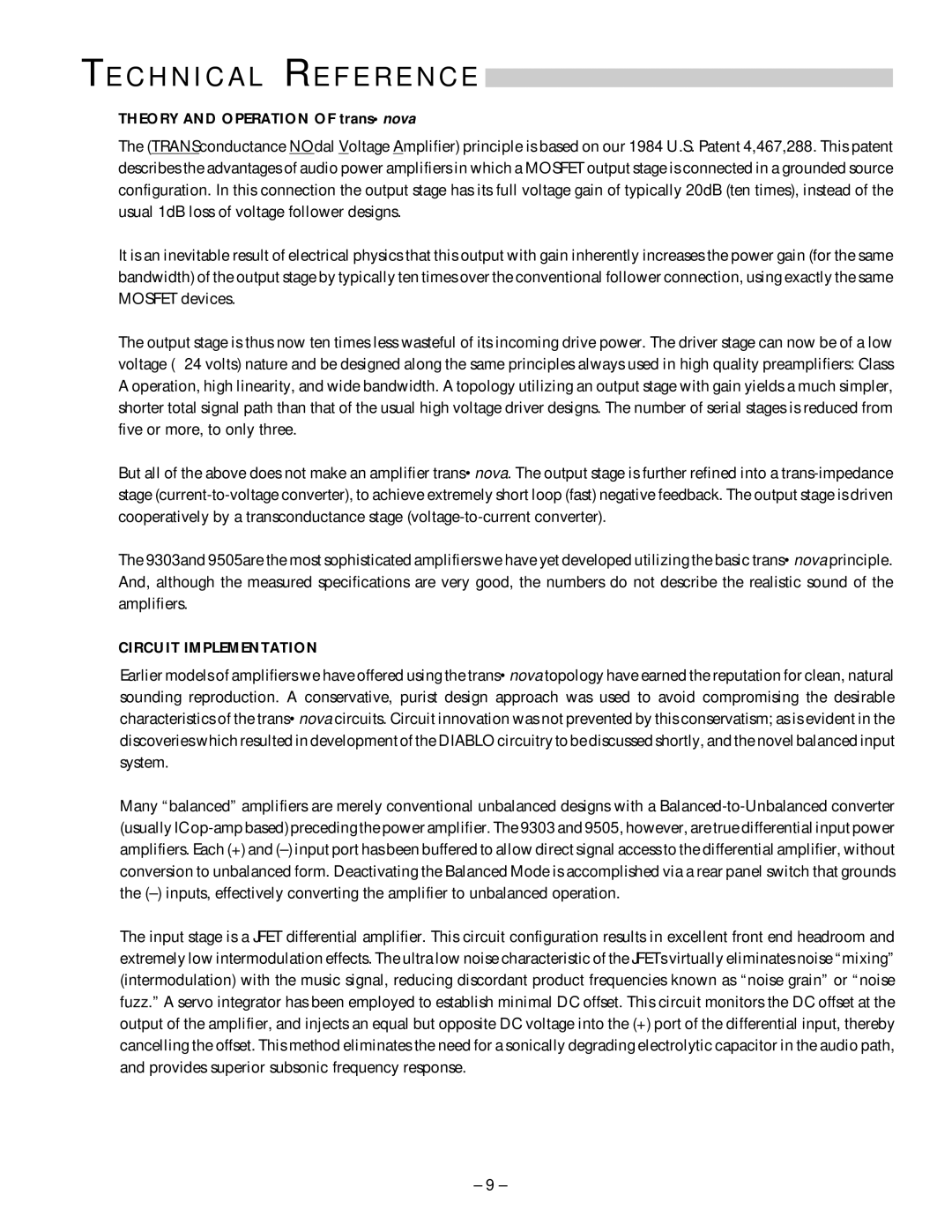9505, 9303 specifications
The Hafler 9303 and 9505 are both high-performance power amplifiers that have garnered a solid reputation among audiophiles and professionals in the audio industry. These amplifiers are designed to deliver high-quality sound reproduction with performance and reliability, making them suitable for various audio applications, from home theater systems to professional studio work.The Hafler 9303 is a versatile amplifier known for its warm sound and consistent performance. With a power output of 100 watts per channel at 8 ohms and 150 watts at 4 ohms, it provides ample headroom for dynamic peaks in music without distortion. The 9303 features a classic, rugged design and is equipped with an exceptional thermal management system to prevent overheating during extended use. Its circuitry incorporates advanced feedback technology that minimizes distortion and enhances audio clarity. The amplifier also supports both balanced and unbalanced inputs, allowing for flexible integration into various audio systems.
On the other hand, the Hafler 9505 takes the performance up a notch with a powerful 200 watts per channel at 8 ohms, and it can reach 300 watts at 4 ohms. This model is ideal for driving larger speakers and can handle demanding audio setups. The 9505 incorporates Hafler's proprietary active feedback design, which maximizes damping factor and ensures accurate transient response. Its robust construction and high-quality components provide longevity and reliability, making it a favorite among professionals who require consistent performance in demanding environments.
Both amplifiers feature dual-mono construction, ensuring independent power supply for each channel, which helps in maintaining channel separation and reducing crosstalk. This design contributes to a wider soundstage and clearer audio reproduction, crucial for critical listening and professional applications. Furthermore, the amplifiers are equipped with comprehensive protection circuitry, safeguarding the components against speaker short circuits and thermal overloads.
In summary, the Hafler 9303 and 9505 power amplifiers represent an excellent choice for anyone seeking reliable and high-fidelity audio performance. With their impressive power outputs, advanced technologies, and robust designs, these amplifiers are versatile enough to cater to both home audio enthusiasts and professional sound engineers, ensuring that they deliver exceptional sonic experiences across various settings.
